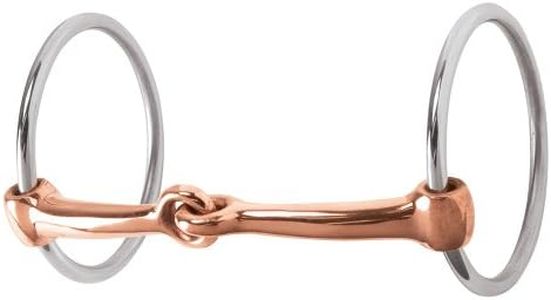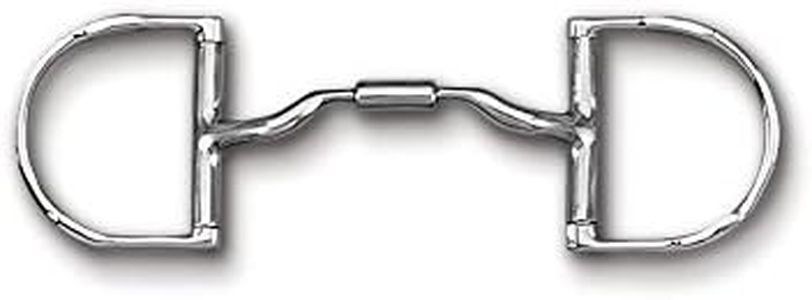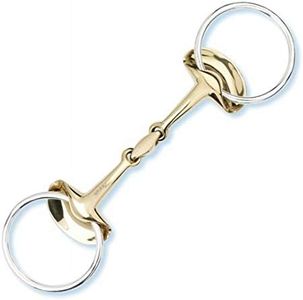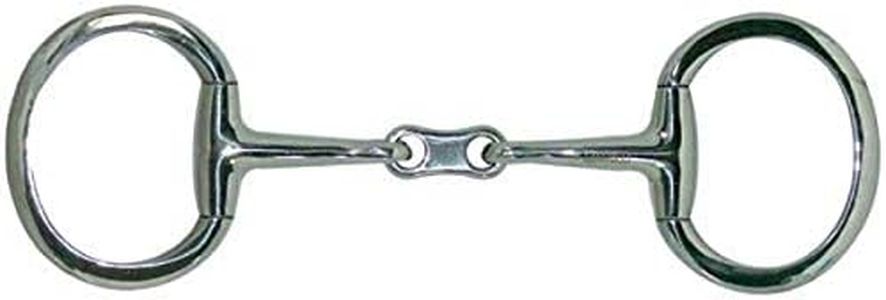We Use CookiesWe use cookies to enhance the security, performance,
functionality and for analytical and promotional activities. By continuing to browse this site you
are agreeing to our privacy policy
10 Best Snaffle Bit For Horses
From leading brands and best sellers available on the web.Buying Guide for the Best Snaffle Bit For Horses
Choosing the right snaffle bit for your horse is important for both effective communication and your horse’s comfort. Snaffle bits are commonly used because they are generally mild and straightforward, making them a popular choice for many riders and disciplines. When selecting a snaffle bit, understanding the main features—such as the mouthpiece, ring type, material, and size—will help ensure you choose an option that matches your horse’s needs and your riding style.Mouthpiece TypeThe mouthpiece is the part of the bit that sits inside your horse's mouth. Its shape and construction influence how the bit feels and how much pressure it applies. Common types include single-jointed, double-jointed, and mullen mouthpieces. Single-jointed mouthpieces create a nutcracker action that adds direct pressure, while double-jointed pieces provide a gentler, more even distribution of pressure. Mullen mouthpieces are straight and offer a consistent feel with less tongue pressure. Horses with more sensitive mouths may prefer double-jointed or mullen designs, while those needing more precise control might respond well to a single-jointed style. Think about your horse’s preference, sensitivity, and your riding goals when choosing.
Ring TypeThe ring refers to the side pieces of the bit, which connect to your reins. Popular snaffle styles include loose ring, eggbutt, and D-ring. Loose ring snaffles allow the mouthpiece to move freely, encouraging relaxation but sometimes causing pinching for sensitive horses. Eggbutt rings are fixed and prevent pinching, giving a steady, consistent feel. D-rings help with lateral guidance, making them good for young or green horses. If your horse dislikes movement or gets pinched, a fixed ring may be preferable; otherwise, a loose ring can encourage responsiveness.
MaterialSnaffle bits are commonly made from stainless steel, sweet iron, or copper. Each material affects taste and how much the horse salivates. Stainless steel is durable, doesn’t rust, and is neutral in taste. Sweet iron and copper can encourage salivation and a softer mouth because many horses like their taste. If your horse seems dry-mouthed or resistant, a bit with copper or sweet iron might encourage acceptance. If you want longevity and easy maintenance, stainless steel is a practical choice.
Bit ThicknessThe thickness of the bit affects pressure distribution. Thicker mouthpieces distribute pressure over a larger area, making them softer and milder. Thinner bits create a more focused pressure, which can be stronger. Sensitive horses or those with small mouths may do better with thinner bits, but for most horses, a medium to thick bit is comfortable and safe. Consider your horse’s mouth size and sensitivity when deciding.
Size (Width)The width, or length, of the bit should match your horse’s mouth to ensure comfort and effective communication. Bits that are too short can pinch, while those that are too long may slide around and reduce clarity of cues. Measure your horse’s mouth or consult sizing charts, and aim for a bit that sits comfortably at each corner of the lips without excess movement. Always check for pinching or rubbing after fitting.













